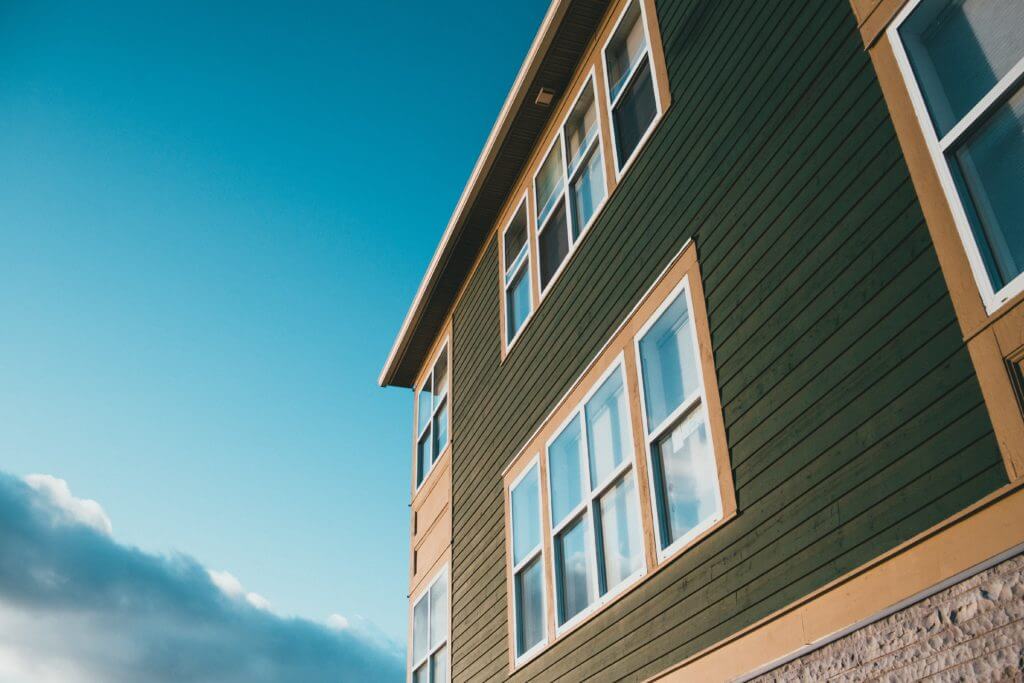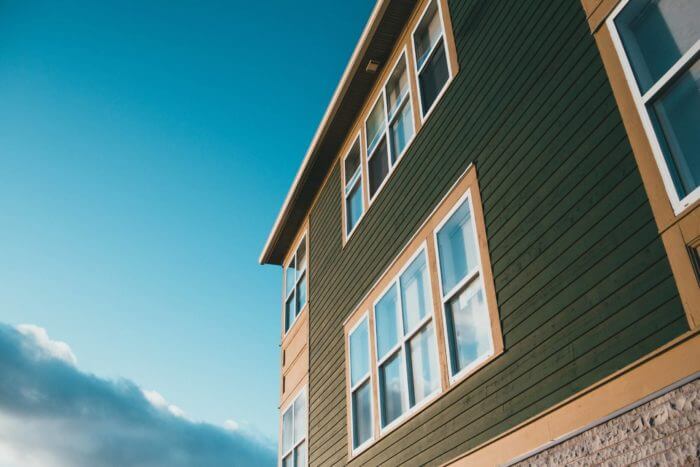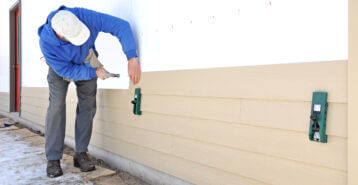Are you doing a siding project?
Modernize can pair you with three to four pros in your area, so you can compare options and save time and money.
While designed to weather the elements, a severe storm can lead to wind or hail damage on siding. Homeowners need to be able to identify siding damage, so you can quickly restore your home’s privacy, safety, and comfort. If left untreated, water can seep in and cause larger problems. Fortunately, spotting siding damage is typically a straightforward job, so you can get this home repair remedied quickly.

Stay Safe and Assess
Before inspecting the exterior of your home for damage after a storm, make sure the severe weather has passed and it is safe to be outside. If you see downed power lines, electrical hazards, or flooding, keep away from the area and immediately call 911.
Even if the coast is clear, continue to be aware of potential hazards.
Wind and Hail Damage
A storm can inflict different types of damage on your home’s siding depending on the material. For example, wind or hail damage on vinyl siding can cause chipping or holes while aluminum or other metal sidings are more likely to experience dents.
Meanwhile, wood siding can be cracked and warped due to severe rainstorms. This could lead to mold and rot if the wood is untreated.
If you notice wind or hail damage on your siding that appears to be merely cosmetic, be mindful that this could be a point for moisture damage beneath the siding. Some damage might also be difficult to spot from the ground (especially in a multi-story home).
Signs of Siding Damage
As noted above, several common types of siding storm damage can occur. If your home features vinyl or wood siding, watch for the following:
Find the Right Contractor for Your Siding Project
Whether you’re ready to begin your project now or need some expert advice, our network of contractors are here to help. With a few simple questions, we’ll find the best local professionals for you
- Cracking: Splits or cracks typically run parallel to the siding, often between the valley and ridges of the panel.
- Chipping: Small pieces of siding often break off near the bottom of a panel ridge, where the siding cannot absorb impact.
- Peeling: If paint peels away from the siding, moisture damage from a storm may be the cause.
- Breaking and Holes: Severe storms can cause wind or hail damage, leading to holes or breaks. Broken siding no longer protects your home, so replace it quickly to prevent further damage.
Though metal siding, such as aluminum, offers better durability, it remains susceptible to damage. The most common signs of storm damage on aluminum siding include:
- Dings and Dents: Flying debris or hail damage can cause these. While they may seem minor, dings and dents can lead to rust, cracking, or breaks.
- Displacement: Strong winds during severe storms can tear metal or aluminum siding off your home.
Repairing Siding After a Storm
If you detect any siding damage, it’s important to work quickly to prevent further damage and minimize costs.
Your first instinct might be to repair the siding or cover the damages on the spot. But you’ll first want to take detailed notes and photos of the damaged siding to provide to your insurance provider should you need to file a claim.
Before filing a claim and having an adjuster visit your home, have a local contractor (or multiple) provide a repair estimate. Quality contractors will also inspect other areas of the home—even if they aren’t visibly damaged—such as windows, doors, and the roof.
You’ll also want to contact your insurance agent, who can help you decide if filing a claim is the best option for your situation. Some insurance companies limit the number of claims homeowners can make in a year, so it’s best to explore your options.
And though some repairs might be possible for an expert DIY-er, replacing or repairing siding is best left to trusted professionals. You want to ensure your home is properly protected the next time a storm hits.
Next Steps
Modernize can help you find and vet trusted contractors in your area. They will work with you to assess siding damage or get your home ready for the next weather event.
Find the Right Contractor for Your Siding Project
Whether you’re ready to begin your project now or need some expert advice, our network of contractors are here to help. With a few simple questions, we’ll find the best local professionals for you
Reviews from Real Homeowners
Welcome to Homeowner Resources! We are the Modernize blog. Modernize pairs more than 3 million homeowners a year with pre-vetted contractors in their area. This blog started because we believe homeowners should know everything about their homes, from how their HVAC works to which front door colors they might love. On Homeowner Resources, you can find information on every part of your home, right down to how you can negotiate with contractors to get the best price. Here's more about the blog.
Need a contractor? Learn more about how Modernize finds the right pro for you.





